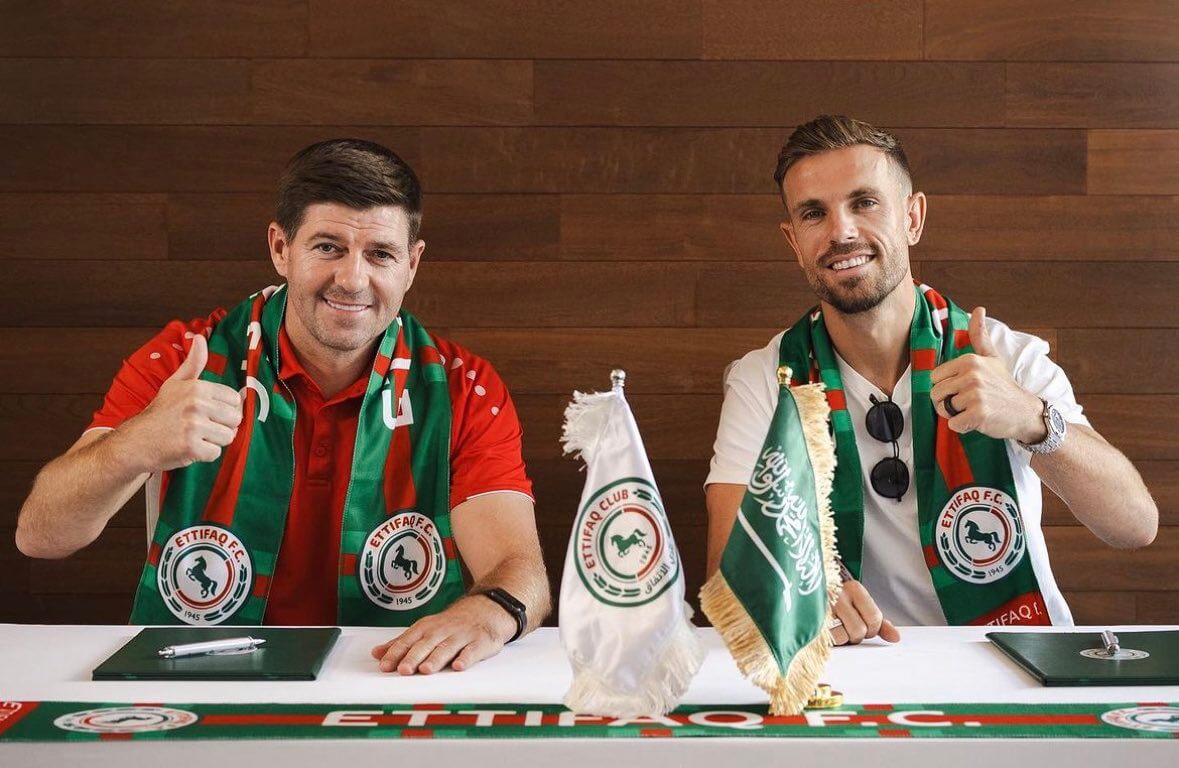Introduction: A New Era in Saudi Football
In the tranquil setting of the Terme Sveti Martin wellness centre, a dramatic revolution in Saudi football unfolded. The Athletic’s Simon Hughes offers an insightful look at how Al Ettifaq recruited Jordan Henderson, one of Liverpool’s Champions League-winning captains, in a controversial move that perhaps signifies a significant shift in football culture.
Unexpected Setting for a Landmark Signing
While women in bathrobes and flip-flops strolled towards the spa in the hills of northern Croatia, a scene unfolded that would redefine perceptions. The green and white scarf of Al Ettifaq beside two miniature flags, one representing the club and the other the Kingdom of Saudi Arabia, heralded the arrival of Jordan Henderson.
Steven Gerrard, working in the hotel’s lobby, drew little attention, yet his presence marked a significant milestone in the Saudi football revolution.
Henderson’s Controversial Move
“Henderson’s move, however, is more controversial. Previously, he had been one of the most prominent vocal supporters of the LGBTQI+ cause, illustrated most vividly when he wore the rainbow armband as Liverpool captain. The prospect of him moving to Saudi, where homosexuality is illegal, has upset many of those who considered him an ally,” reports Simon Hughes.
A Landmark Moment
Henderson’s arrival marked the most significant day in Al Ettifaq’s 78-year history, signaling a change in the Saudi footballing world. Henderson, who wasn’t familiar with Al Ettifaq until this summer, was lured with a £100 million contract, making him the first English footballer to sign up for the new era.

The Men Behind the Revolution
Key Personnel
The Athletic’s Hughes highlights the powerful and wealthy figures involved in this unprecedented period. From the club’s CEO Moath Al-Ohali to the vice-president Hatem Al-Misehal, their roles may not have been immediately identifiable, but their influence was undeniably significant.
The Saudi Vision 2030
A focus on Vision 2030, launched by crown prince and prime minister Mohammed bin Salman, paints a broader picture of Saudi Arabia’s intent to diversify the economy. With investments estimated at $6.3 billion, football is taking a considerable portion of the financial pie. A source cited in Hughes’ original article highlights the necessity for non-PIF clubs to be competitive, signalling a need for investment, better personnel, and structure.
Political Dynamics and Economic Forces
Presidential Election
The recent presidential election at Al Ettifaq, won by Samer Al-Misehal, sets the stage for understanding the broader forces at play within Saudi football.
Imminent Acquisition by SABIC
Ettifaq is believed to be poised for acquisition by petrochemical giant SABIC (Saudi Arabia Basic Industry Corp), owned by Aramco. The connections between club officials, Vision 2030, Aramco, and SABIC highlight a complex web of interests that ultimately fuels the transformation of Saudi football.
Conclusion: The Vastness of Newfound Wealth or Abandoned Morals?
Henderson’s signing signifies more than just a lucrative deal. It questions the balance between moral convictions and financial gains, challenges the norms of football culture, and opens a dialogue about the driving forces behind the game.
Hughes’ original article paints a vivid picture of a moment that may resonate far beyond a Croatian wellness centre, into the intricate maze of politics, economics, and culture that defines modern football.
The new players and staff may not be speaking to the media now, but the questions raised by this event are unlikely to be silenced. The world is now watching how this plays out on the fields of Saudi Arabia




